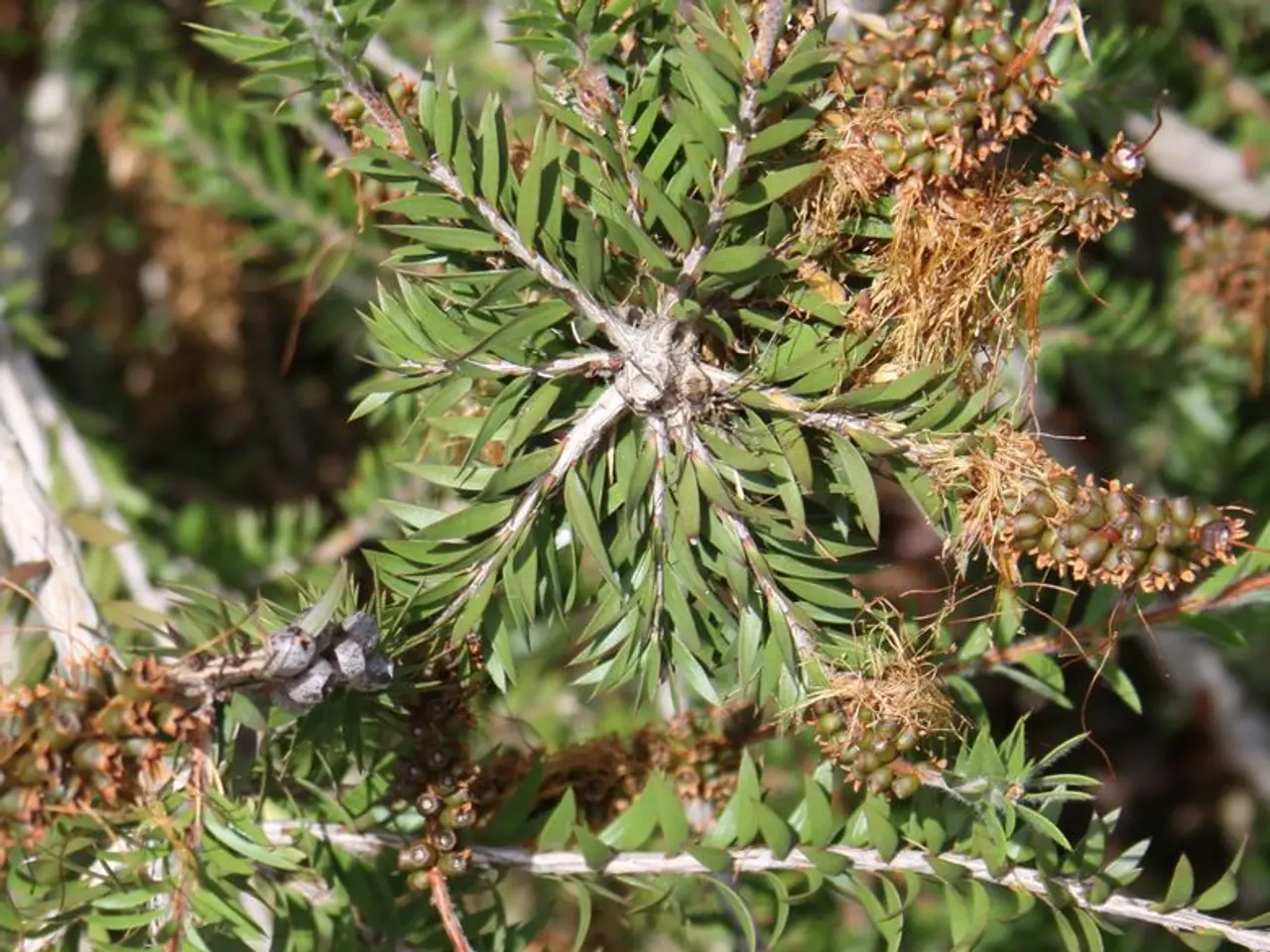Trimming Young Grape Vines in their Initial Three Years
In the world of viticulture, the third year of a grapevine's life marks an important milestone. This is the time when the grapevine transitions from a period of growth and establishment to a more focused approach on fruit production. Here's a step-by-step guide on how to prune third-year grapevines using the spur pruning technique.
The Spur Pruning Technique
The key to successful pruning lies in understanding the spur pruning technique. Last year's canes growing from the cordons (horizontal arms) are cut back to short spurs, each retaining 2 to 3 buds. These buds will develop into shoots bearing grape clusters in the next growing season.
Choosing the Right Spurs
Selecting the right spurs is crucial. Healthy canes that grew last year along the cordons should be chosen. Older or weak wood should be removed to prevent overcrowding. The spurs should be evenly spaced along the cordon, with about 6 to 8 inches between them, ensuring good air circulation and light penetration.
Determining the Bud Count
The number of buds to retain on each spur is an essential factor. Leaving 2 to 3 buds on each spur strikes a good balance between fruit quantity and quality. Each bud can potentially produce one or two grape clusters, avoiding overcropping which can reduce grape size and vine vigor.
Timing is Everything
Pruning should be done during the vine's dormant season, typically in late winter or early spring before buds swell. This allows for a clear view of the vine's structure and minimises the risk of disease.
Additional Tips
- Keep your tools clean and sharp to prevent disease spread.
- Maintain an open canopy by removing excess growth for better air flow and sunlight exposure, which supports healthy fruit development.
The Benefits of Combing
Grapevine combing, a vital part of annual grapevine maintenance, reduces the overall number of tangled shoots and increases light penetration into the vine canopy. This promotes good quality fruit, better winter hardiness of canes, and more productive canes for next year's crop.
With proper pruning, grapevines can be trained to an appropriate position on the trellis or arbor, resulting in a more orderly appearance compared to an uncombed vine. The lateral shoots will grow horizontally in both directions along the top wire, providing a neat and efficient vine structure.
In the first and second years, the focus is on establishing the vine and promoting healthy growth. In the third year, the vine is ready to transition into fruit production, and with careful pruning, it can continue to thrive and produce delicious grapes for years to come.
References for further reading include Ohio State University Extension Bulletin 919: Midwest Grape Production Guide and Ohio State University Extension Bulletin 940: Midwest Home Fruit Production Guide. These resources provide a wealth of information on grapevine care and pruning techniques.
Read also:
- Exploring the Advantages of Outdoor Group Meditation for Enhancing the Mind-Body Union
- Hidden beneath the appealing aesthetic of Consume Me's artwork lies a more ominous nature
- Reflection: Ponder the Fate of City Pigeons
- Sustainable Seafood Consumption: An Examination of Environmental Impact: A Guide for Seafood Lovers





